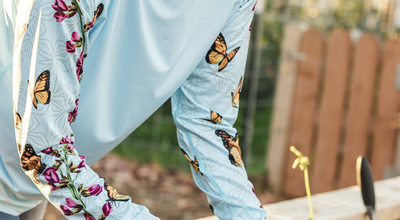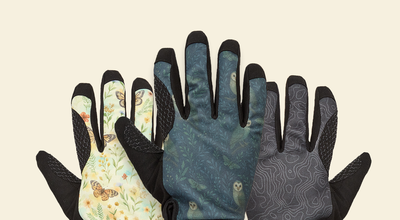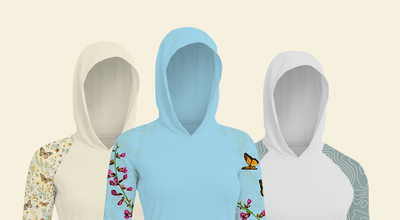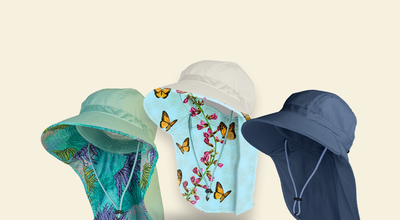How to Avoid Skin Irritants and Allergens While Gardening
Gardening isn’t just about the love of working with the earth and spending time outdoors; there’s a passion for the plants themselves. And while we tend to the plants we grow, the same plants that bring us joy often cause health problems. Next to the risks of being in the heat and sun, allergic reaction from plant contact is the biggest threat to your health when working in the garden. Allergic reactions from plant exposure to the skin can be as severe as warranting a trip to the hospital. When we think of allergic reactions on the skin, we typically think of poisonous plants like poison ivy, poison oak, and sumac. Still, many plants besides these infamous ones can cause severe reactions in many people. When coming into contact with any plant saps, pollens, or oils, there are some things you can do to stay safe.
1. Dress the part!
A minor interaction with a plant’s sap, thorns, or spines can injure your skin. aad.org lists skin covering as its number one way to protect from allergen while gardening, and we couldn’t agree more. The best way to avoid an adverse reaction is to stay covered. Here’s a list of things that can save your skin.
Sleeves: Shirts with long sleeves have always been the go-to for gardening, but with the hot and itchiness factor, the Farmer’s Defense compression sleeve with UPF 50+ is the perfect answer to the problem so many of us have faced.
Gloves: Our hands do a lot of the work in the garden, so it's essential that we keep them safe. Gloves are commonly found in most gardener’s tool kits, but if it’s not on your list, get a pair of something heavy-duty to stay protected and comfortable. Having some gloves on deck will also help keep our hands away from our faces and eyes. Often, we rub that itchy eye, making it all that much worse.
Shoes: The sun is shining, and the weather is sweet, but please cover those bare feet. Working in something closed-toed isn’t always ideal, but a lot gets kicked up out there in the garden, so it’s best to be on the safe side and keep the toes covered.
Pants: Also not anyone’s favorite thing to wear on a hot day, but something loose with good ventilation is a good safe bet, and the more skin covered at all times, the less room for exposure to the sun there’ll be.
Aprons: familydoctor.org recommends wearing an apron as a solid hot tip. We often wipe our hands or collect dirt and pollen on our clothes when trimming, watering, and digging. An apron is an easy and quick barrier between you and what you grow. Plus, there’re usually some extra pockets to keep things handy.
Head and face coverings: Often overlooked when considering body protection in the garden, your neck, face, and head are sometimes the most vulnerable part of your body when exposed to plants. This part of your body can be far more sensitive than others, especially when exposed to heat. Utilizing a hat, face mask, and neck gaiter is a surefire way to do the most when suiting up for gardening.
2. Keep it clean
No matter how well our outerwear works to protect us, we’re still exposed to some not-so friendly elements outdoors. Here are several dos and don’ts:
Avoid touching the face and eyes: While an allergic reaction anywhere on the body can be dangerous, the face and eyes are highly vulnerable. A reaction here could cause significant harm and illness.
Treat any wounds ASAP: Even a minor scratch or skin puncture from a thorn can lead to a severe reaction. Ensure to wash the wound with soap and water, apply antibiotic ointment, and keep the wound covered with a bandage. Keep the wound clean and covered with fresh bandages until it’s fully healed.
Leave it at the door: Leave all tools, gloves, shoes, and necessary outwear outside to avoid tracking in allergic triggers.
Rinse and repeat: Not that it’s not already calling your name after getting covered in sweat, dust, and pollen out in the yard, but jumping in the shower as quickly as possible is the best way to get pollen other irritants off our bodies and away from beds and sofas.
3. Read gardening products carefully before use
Many products have a warning on the label. Reactions can range from mild irritations to severe burns. It’s always best to know what you’re working with if your skin becomes exposed to potentially harmful substances
4. Sun protection
Covering the skin isn’t just about protecting ourselves from allergens and irritants, but keeping ourselves safe from the sun as well.
When the skin is exposed to oils and pollens from plants, there is potential for an adverse reaction on the skin. This potential is exacerbated by exposure to heat and damage caused by the sun’s rays. Keeping as much skin covered by well-fitting UPF fabric and sunscreens with high SPF is the best way to stay safe.
For more on sun protection and UPF fabrics, check our guide to keeping safe from the sun while working outdoors in the garden.

Why taking the proper precaution is so important
Even minor irritations and rashes due to allergens from plants are forms of dermatitis and can quickly become chronic issues if left untreated. Repeated contact with a plant can cause skin irritation and allergic reactions. These reactions can remove natural oils from the skin, causing cracking and dryness. According to informedhealth.org, about eight percent of all adults have a skin contact allergy. Seeing how our skin is our largest and most vulnerable organ, we must do everything possible to protect it.












